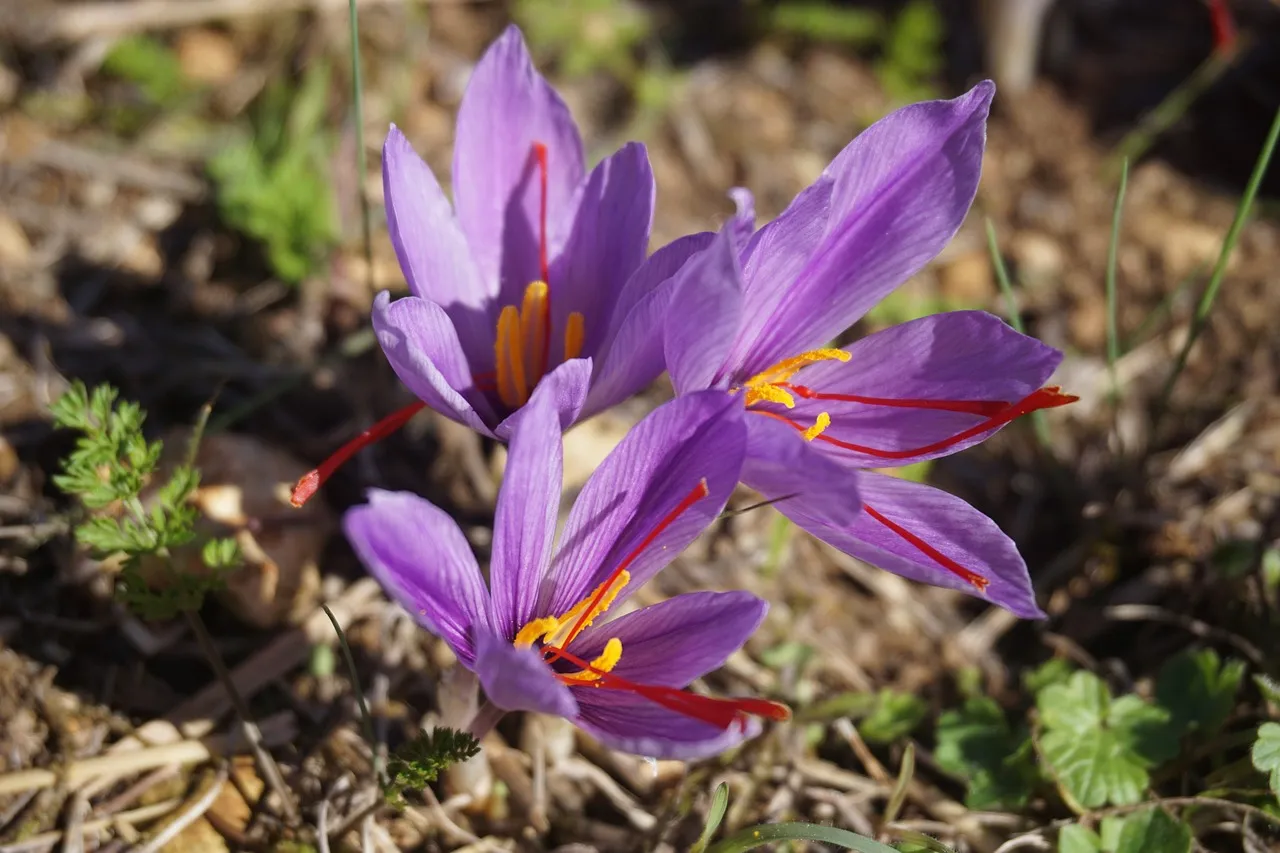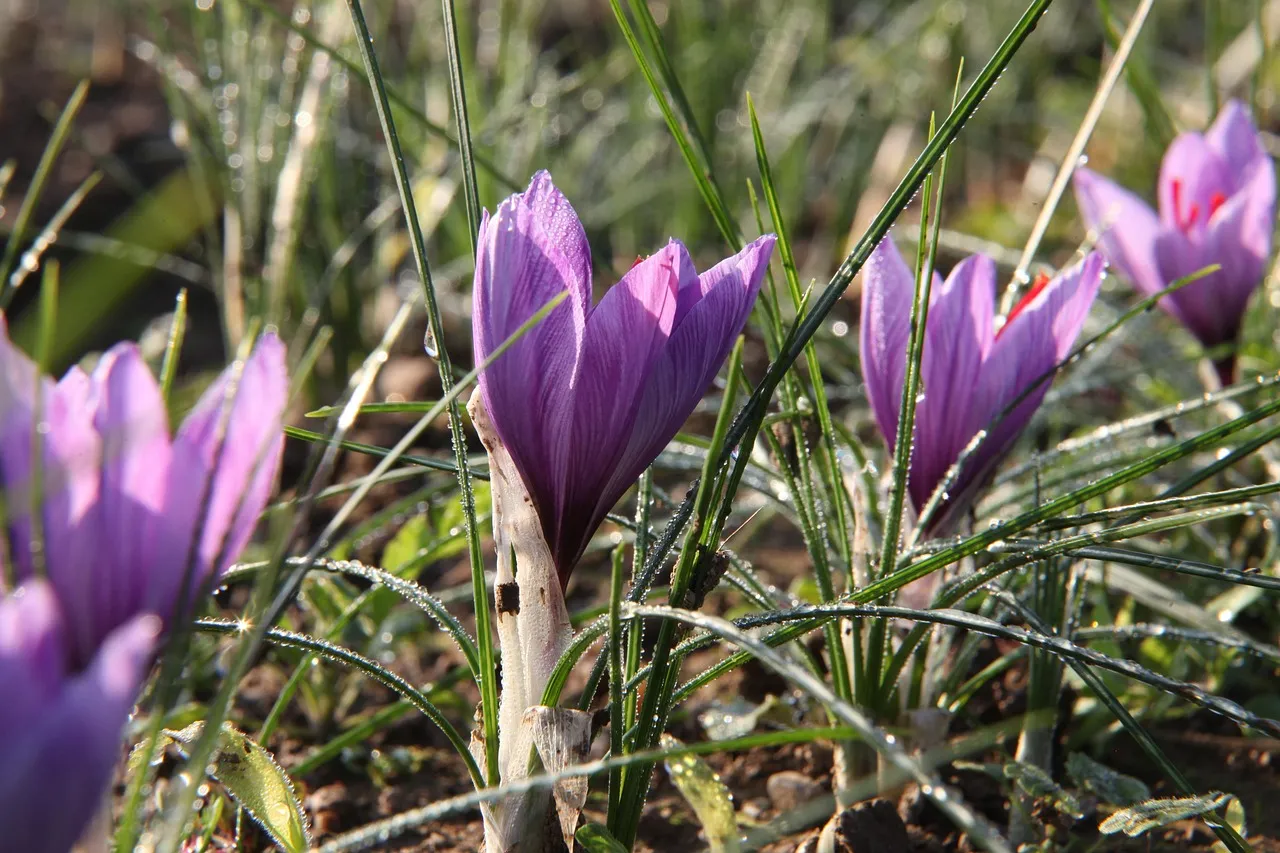Aeroponic saffron farming is transforming the way we cultivate one of the world’s most valuable spices. Traditionally grown in limited regions like Kashmir, Iran, and parts of Spain, saffron has always been a labor-intensive and climate-dependent crop. However, with the advent of aeroponic farming, growing saffron is now possible even in urban and non-traditional environments—using minimal water and achieving significantly higher yields.
What Is Aeroponic Farming?
- Aeroponic farming is an advanced method of soilless agriculture where plants are grown with their roots suspended in the air and nourished through a fine mist of water infused with essential nutrients. Unlike traditional farming, which relies on soil to deliver water and minerals to plants, aeroponics delivers nutrients directly to the root zone through a controlled, high-efficiency misting system.
- This cutting-edge technique allows growers to precisely regulate all aspects of plant nutrition, moisture levels, and environmental conditions, resulting in faster growth, healthier crops, and higher yields. Since the roots are not confined by soil, they are exposed to more oxygen, which significantly enhances metabolic activity and nutrient uptake.

Key Advantages of Aeroponic Farming
Up to 300% Increase in Yields
One of the most remarkable benefits of aeroponic farming is its potential to boost crop yields by up to 300% compared to conventional soil farming. With constant access to nutrients and oxygen, plants grow faster and produce more. The controlled environment also eliminates seasonal limitations, enabling year-round cultivation and multiple harvest cycles.
Around 90% Reduction in Water Usage
Water scarcity is a growing concern in agriculture. Aeroponic systems address this by using up to 90% less water than traditional methods. Instead of soaking the soil, the mist delivers only the precise amount of moisture needed by the plants, minimizing waste through runoff or evaporation. This makes aeroponics ideal for regions with limited water resources.
Enhanced Disease Resistance
Because aeroponics is a closed-loop system that does not use soil, it greatly reduces the risk of soil-borne diseases, pests, and fungal infections. The sterile environment also lowers the need for chemical pesticides or herbicides, supporting cleaner and more sustainable food production.
Vertical Farming and Space Optimization
Aeroponic systems are highly space-efficient and can be integrated into vertical farming structures, allowing growers to stack multiple layers of plants in a compact footprint. This is particularly valuable in urban areas or greenhouses where space is limited but demand for fresh produce is high. With the ability to scale vertically, aeroponics opens up new possibilities for high-density farming in cities and non-arable regions.
Why Aeroponic Saffron Farming Works
Saffron (Crocus sativus) is often referred to as “red gold” due to its high market value and labor-intensive cultivation process. Traditionally grown in select regions such as Kashmir, Iran, and parts of Spain, saffron demands very specific conditions—well-drained soil, abundant sunlight, dry weather during flowering, and carefully timed harvesting cycles. These strict requirements have historically limited its commercial cultivation to a few suitable geographic zones.
However, aeroponic saffron farming is now changing that narrative by offering a controlled, efficient, and scalable alternative to traditional soil-based methods. Here’s a closer look at why this innovative technique works so well for saffron:
Climate Independence: Year-Round Cultivation Anywhere
One of the greatest advantages of aeroponic saffron cultivation is its freedom from climate constraints. Traditional saffron farming is bound to specific seasons and climate windows, making it vulnerable to unpredictable weather patterns and climate change.
With aeroponics, saffron can be grown in indoor, climate-controlled environments such as greenhouses, grow chambers, or vertical farms. Growers can precisely regulate temperature, humidity, light cycles, and nutrient delivery—allowing saffron to thrive regardless of the external environment. This means:
- Multiple harvests per year (not just seasonal)
- No risk from frost, droughts, or unexpected rainfall
- Suitable for tropical, arid, or urban climates

Urban Integration: Grow Saffron in the Heart of the City
Urban agriculture is no longer a trend—it’s a necessity. Aeroponic systems are compact, modular, and scalable, making them ideal for urban integration. Saffron, once limited to rural hillsides, can now be cultivated:
- On rooftops
- Inside vertical farms
- In greenhouses or shipping containers
- Even in repurposed indoor spaces like basements or warehouses
This opens the door to urban saffron farming, where local growers, startups, or cooperatives can produce high-value crops within city limits—reducing the need for imports and supporting local food systems.
Resource Efficiency: Water-Wise Cultivation for a Drying World
Water scarcity is one of the biggest challenges in traditional saffron-producing regions. Aeroponic systems directly address this by using up to 90% less water than soil-based farming. Here’s how:
- Water is delivered in fine mist form directly to the roots, ensuring zero runoff or evaporation
- Unused water is recirculated within the system, drastically reducing waste
- No need for heavy irrigation or constant monitoring of soil moisture levels
This level of precision irrigation makes aeroponic saffron farming not only sustainable but exceptionally suited for water-stressed regions.
Improved Quality and Yield: Better Saffron, More of It
Aeroponics allows growers to fine-tune every aspect of the growth environment, leading to:
- Higher stigma yield per corm (bulb) due to optimal nutrient and oxygen supply
- Uniform and premium-quality saffron threads
- Faster growth cycles and healthier corm propagation
- Reduction in pests, diseases, and mold—leading to cleaner, chemical-free saffron
With less stress on the plant and more control over conditions, aeroponic systems unlock the full genetic potential of the saffron plant, producing richer color, stronger aroma, and higher-grade end products.
Urban Saffron Farming: A New Frontier
Urban agriculture is on the rise, and urban saffron farming through aeroponics is a game-changer. Cities with limited arable land can now produce saffron locally, reducing dependence on imports and transportation-related carbon emissions.
Benefits of urban aeroponic saffron farming include:
- Local, fresh saffron production
- Reduced environmental footprint
- Empowerment of local growers and entrepreneurs
- Opportunities for agri-tech innovation and education
Getting Started with Aeroponic Saffron Cultivation
To begin your aeroponic saffron farming journey, you’ll need:
- A closed or semi-closed growing chamber
- Climate control systems (temperature, humidity, and light)
- High-quality saffron corms (bulbs)
- Nutrient delivery system and mist nozzles
- Monitoring systems for pH, EC, and nutrient levels
Saffron corms are planted in trays or holders with root zones exposed to air. The growth cycle includes a dormant stage, sprouting phase, flowering period (for stigma collection), and corm multiplication phase.

Is Aeroponic Saffron Farming Profitable?
Absolutely. Although the initial setup cost for aeroponic systems can be high, the long-term benefits outweigh the investment:
- Higher yield per square meter
- Consistent quality and production cycles
- Reduced water and fertilizer costs
- Potential for premium pricing due to quality control
With increasing global demand and limited traditional production, aeroponic saffron cultivation presents a sustainable, scalable, and highly profitable opportunity.
Final Thoughts
As the world moves toward sustainable agriculture, aeroponic saffron farming emerges as a viable, future-forward solution. By combining technological innovation with resource efficiency, this method not only addresses water scarcity but also opens doors for saffron production in urban landscapes and unlikely geographies.
Whether you’re a commercial grower or an agri-entrepreneur, now is the perfect time to explore the untapped potential of soilless saffron cultivation.
